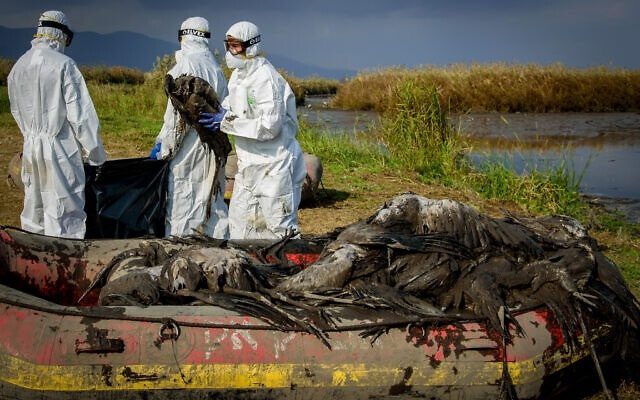According to The Telegraph, a 53-year-old woman in China has recently been hospitalized due to a strain of avian influenza – a type of flu that is now infecting mammals worldwide.
The patient, from Jiangsu Province, had a history of contact with poultry and began showing symptoms on January 31. She was admitted to the hospital on February 4.
Unlike avian influenza cases in Cambodia, which are linked to an H5N1 strain that has been circulating in the region for a decade, the 53-year-old woman in China has been infected with a variant of avian influenza that is causing an unprecedented global outbreak among birds.

Avian influenza is spreading rapidly in many countries, including infections in mammals. (Image: timesofisrael).
“Genetic sequencing shows that the 53-year-old woman in China was infected with H5N1 subtype 2.3.4.4b – which is widely circulating among birds. Since 2020, there has been an increase in reports of avian influenza outbreaks in wild birds and poultry globally, and we may see more sporadic cases in humans,” said Dr. Sylvie Briand, Director of the WHO’s Pandemic and Epidemic Preparedness and Prevention Department.
Last November, China reported a death from H5N1 in Guangxi Province. This week, China also confirmed cases of two other avian influenza types: H5N6 and H9N2.
At a press conference last week, Dr. Briand stated that the UN agency is genuinely concerned about the potential for avian influenza to transmit from human to human. Experts indicate that recent infections serve as a stark reminder of the “increasing threat” posed by avian influenza.
“The risk of avian influenza to humans is rising as there are many viruses in poultry and wild birds. The virus can change at any time, and the risk will be higher when it is more prevalent in the environment. This does not mean that a human outbreak is imminent, but no one can control the virus, so it can be said that this is a serious risk,” said Professor Munir Iqbal, head of the Avian Influenza Group at the Pirbright Institute in the UK.
Professor Iqbal’s concerns are well-founded, as Peru has reported that 3,500 sea lions in the country have died from H5N1 – five times the previous report. The sea lions exhibited symptoms mainly including tremors, seizures, and paralysis. Although it is unclear how they contracted the disease, researchers indicate that given the scale of this outbreak, they cannot rule out the possibility of avian influenza spreading from mammals to mammals.
Dr. Pablo Plaza, an expert in epidemiology and veterinary public health at the National University of Comahue in Argentina, stated that if transmission among mammal species has begun, the avian influenza virus has changed, which could increase the risk to human health.
“So far, the risk seems low, but we need to remain vigilant as the virus is always evolving. Some changes in the virus are necessary to adapt to human-to-human transmission, so we hope these changes do not occur,” Dr. Pablo Plaza added.


















































